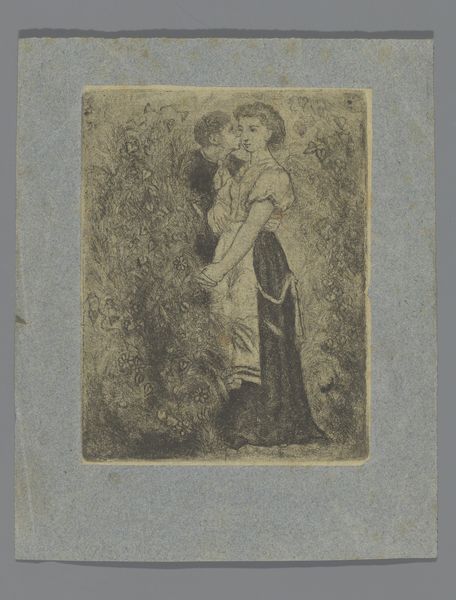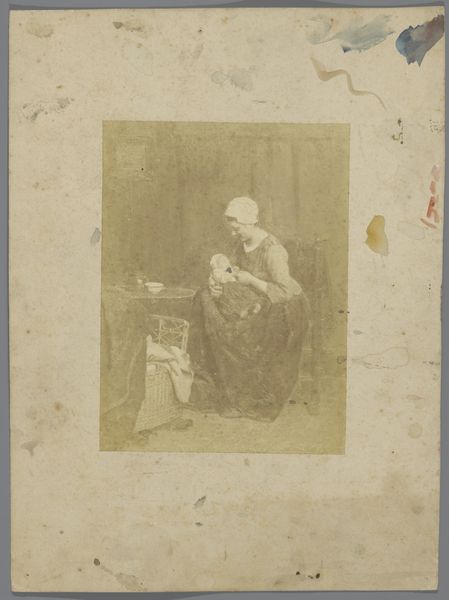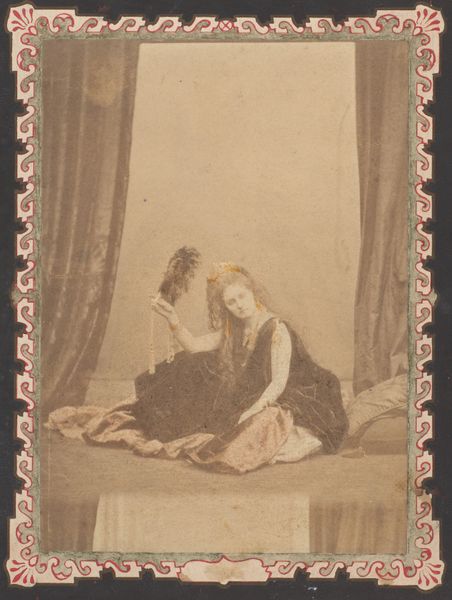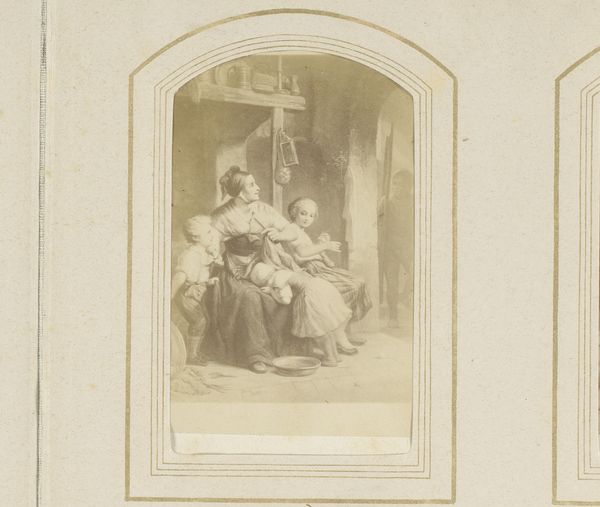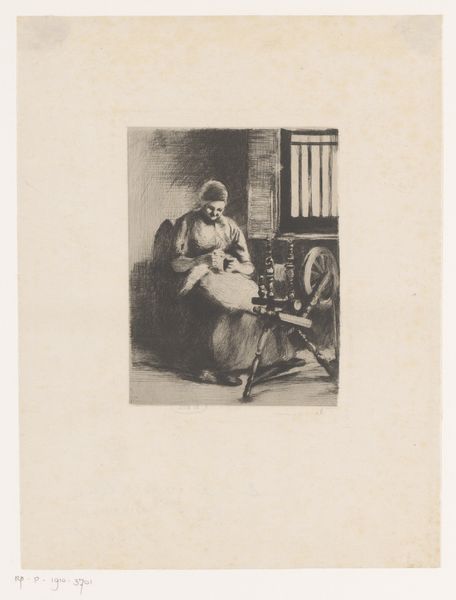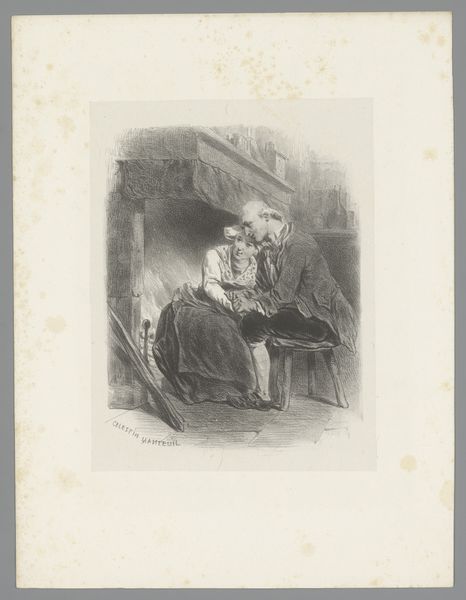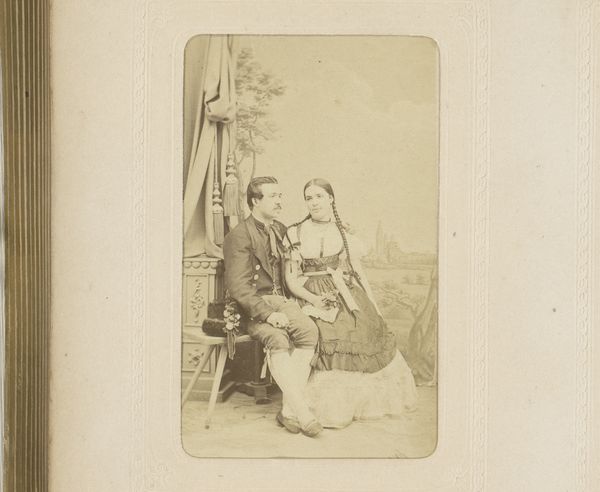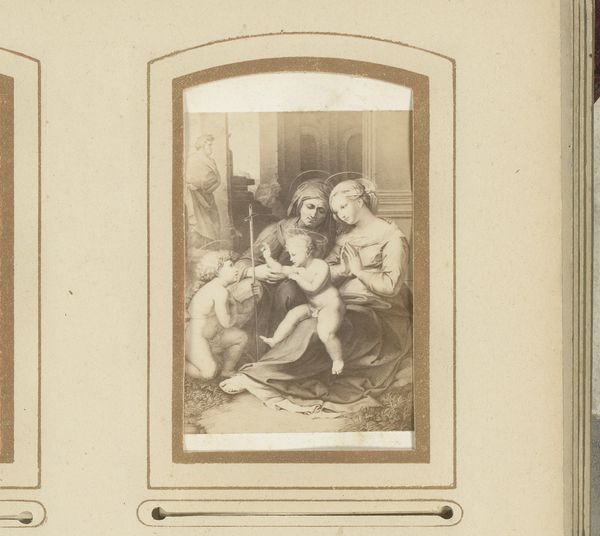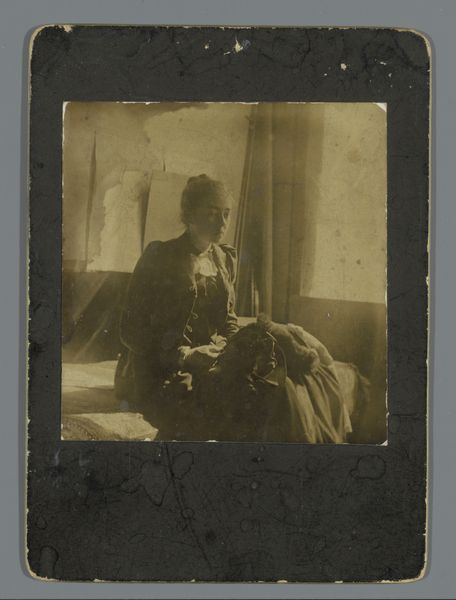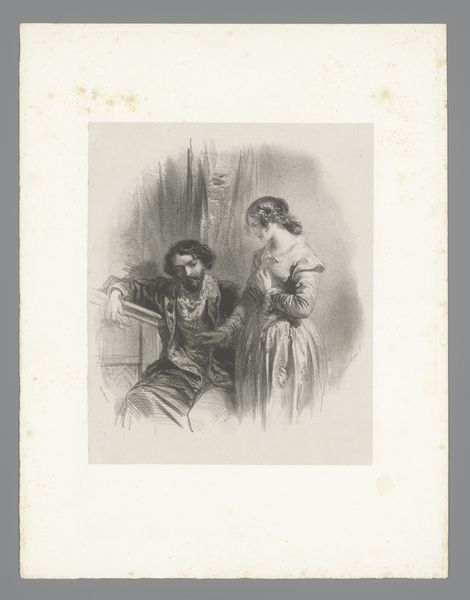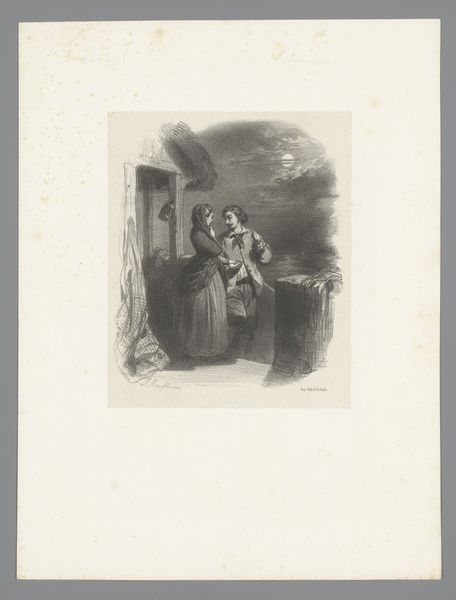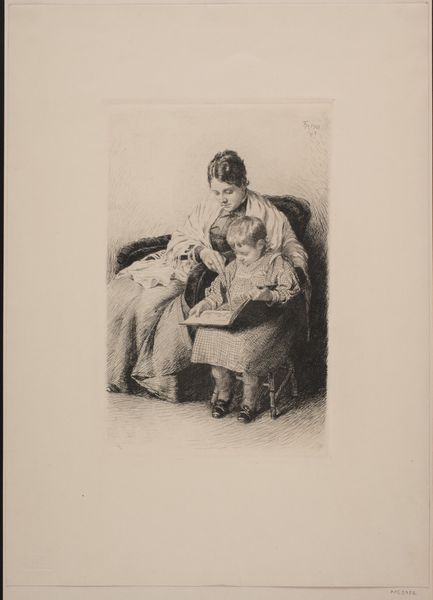
Fotoreproductie van schilderij Twee zusjes door Albert Neuhuys c. 1850 - 1900
0:00
0:00
photography
#
portrait
#
impressionism
#
photography
#
child
#
genre-painting
Dimensions: height 166 mm, width 107 mm
Copyright: Rijks Museum: Open Domain
Curator: Up next, we have a photogravure reproduction of Albert Neuhuys' painting "Two Sisters," created sometime between 1850 and 1900. Editor: There's a certain tenderness that this image evokes, wouldn't you agree? The muted tones give it an intimate quality, almost like a whispered secret. Curator: It's fascinating how photography disseminated genre paintings like Neuhuys' work to a wider audience. Before mass media, such reproductions democratized access to art, shaping cultural values by depicting idealized scenes of domestic life. The rise of middle-class values shaped a public fascination with images portraying childhood. Editor: Visually, what strikes me is the arrangement of the two figures and the warm palette, generating an emotional intensity from an everyday activity. See the textured, blurry backdrop. Its subdued palette contrasts with the girls' fair skin and lighter clothes. Curator: Indeed, photography transformed painting's role within visual culture, impacting how images conveyed both information and aesthetic experience. Photography was both celebrated and questioned for its objectivity; consider the rise of social documentary photography around the same time, compared with the staged scenes that some paintings depict. Editor: Right, and the photographer seems aware of capturing painterly effects—note the diffuse light and shadow around their faces, mimicking impressionist brushstrokes. Also, observe how the older sister who is seated forms the pyramid shape from the Renaissance period with her body while holding the device between the girls. Curator: Precisely! The placement of the photograph within a "Salon des Beaux-Arts" mount further underscores these questions. The artwork is both accessible through reproducibility, while remaining situated firmly within the cultural domain. Editor: To conclude, even though we are viewing a reproduction, the image possesses undeniable emotional strength. Curator: And considering its origins illuminates how social change shapes how we perceive childhood, domesticity and ultimately, artistic expression itself.
Comments
No comments
Be the first to comment and join the conversation on the ultimate creative platform.
